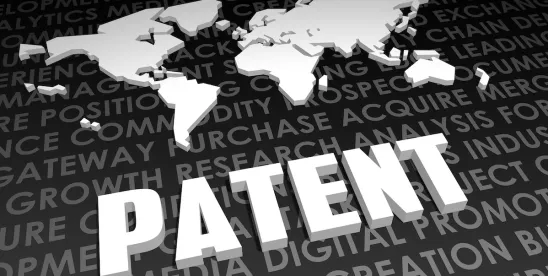The circular economy invites us to fundamentally reconsider our relationship with resources and products. By moving away from the outdated "take-make-dispose" model, companies are embracing a more sustainable approach that prioritizes longevity, repairability, and eventual recycling. This thoughtful design philosophy creates and preserves value throughout a product's entire lifecycle. Effective management of intellectual property (IP) rights serves as a cornerstone of this forward-thinking vision. Companies that skillfully balance robust IP protection with accessible repair rights position themselves to foster continued innovation while advancing sustainability goals. These businesses develop products with extended useful lifespans that significantly reduce unnecessary waste and conserve valuable resources for future generations.
Businesses stands to gain numerous advantages by embracing repair as part of their product lifecycle. Customers increasingly recognize and reward brands that demonstrate genuine environmental responsibility, building stronger loyalty and trust in the products. Products designed with repair in mind naturally create more resilient supply chains that can better withstand parts shortages or other disruptions. This approach also contributes to vibrant local repair economies, reducing transportation-related environmental impacts while creating jobs and economic opportunities in communities where customers live and work.
The legal landscape governing repair rights varies significantly between regions like the United States and European Union. A clear understanding of these different frameworks empowers businesses to make informed decisions about how customers can legally interact with products after purchase.
Here, we highlight significant court decisions, relevant statutes, and practical implications for businesses and consumers, specifically for authorized purchasers of an IP-protected product and the holder of those same IP right. This knowledge allows a company to develop strategies that protect their valuable intellectual property while simultaneously supporting broader sustainability objectives. By thoughtfully balancing potential revenue from repair services against the needs and expectations of the customers, a company can position its business for long-term success.
U.S. Legal Framework
The doctrine of patent exhaustion plays a central role in understanding the right to repair. Under this doctrine in U.S. law, once a patented product is sold, the IP Holder’s rights over that specific item are exhausted. This means the Product Owner is free to use, repair, or resell the item without infringing the patent. The Supreme Court's ruling in Impression Products v. Lexmark International (2017) reaffirmed this principle, rejecting attempts by IP Holders to enforce post-sale restrictions through patent infringement lawsuits. Repair is an affirmative defense to a patent infringement claim; however, where the line between a permissible repair ends and impermissible reconstruction begins is not always clear.
Permissible Repair
Permissible repair in the US refers to actions taken to preserve the utility and operability of an IP-protected product, typically a patented product. This includes replacing individual unpatented parts, one at a time, whether of the same part repeatedly or different parts successively. The Supreme Court's decision in Aro Mfg. Co. v. Convertible Top Replacement Co. (1961), Impression Products both established (and most recently reaffirmed in (2023)) that such repairs are lawful and do not constitute patent infringement under U.S. law.
Impermissible Reconstruction
Impermissible reconstruction involves actions that effectively create a new article from the IP-protected product or embodiment after it has become spent. Typically, the product is protected by patents and thus, reconstruction generally relates to patent infringement. The key distinction lies in whether the activity amounts to making a new article, rather than merely preserving the existing one.
Distinguishing Repairs from Reconstruction
While there is no definitive rule, courts assess multiple factors to determine whether a Product Owner has created a new article, thereby reconstructing the patented product. These factors include:
- Extent of Replacement - Courts look at how much of the patented product has been replaced at one time. If the replacement involves a substantial portion of the product at the same time, it is more likely to be considered reconstruction. However, even if the Product Owner sequentially replaces all the worn-out parts of a patented combination, courts have found this sequential replacement does not constitute reconstruction.
- Nature of the Parts Replaced - Replacing minor, unpatented parts is generally considered repair, while replacing essential, patented components can be seen as reconstruction.
- Purpose of the Replacement - The intent behind the activity is considered. If the replacement is intended to extend the life of the product or restore it to its original condition, it is more likely to be considered repair. However, if the replacement effectively creates a new product, it is more likely to be reconstruction.
A pertinent example provided by the court in the Karl Storz case illustrates the application of many of the factors listed above. The court held that if a patent is granted for an automobile, the replacement of a spark plug constitutes permissible repair. Conversely, retaining the spark plug while replacing the entirety of the car in one action is more likely deemed reconstruction.
Right to Repair at the Federal Level
Recent national developments have significantly impacted the landscape of the right to repair in the U.S. Major players such as Apple Inc. have endorsed federal legislation, while the Federal Trade Commission (FTC) has intensified its enforcement against restrictive repair practices.
Apple Inc. has publicly supported federal right to repair legislation, marking a significant shift in the company's stance on repairability. On October 24, 2023, Apple announced its backing of a federal right-to-repair bill, committing to provide access to tools and parts for customers nationwide.
The Federal Trade Commission (FTC) has taken significant steps to combat illegal repair restrictions and restore the right to repair for consumers, small businesses, and government entities. In July 2021, the FTC adopted a policy statement prioritizing investigations into unlawful repair practices under relevant statutes, including the Magnuson-Moss Warranty Act and Section 5 of the FTC Act. Targeting practices that raise repair costs, stifle innovation, and limit business opportunities for independent repair shops, the FTC aims to address antitrust and consumer protection violations.
Right to Repair at the State Level
As of 2025, right to repair legislation has been introduced in all 50 states. These bills generally aim to guarantee consumers' rights to access replacement parts, repair manuals, diagnostic data, and appropriate tools necessary for maintenance. States such as New York, Minnesota, Colorado, California, and Oregon have already passed right to repair laws, setting a precedent for other states to follow. These laws empower consumers by providing tools and information for self-repair, reducing dependency on manufacturers. They support independent repair shops by ensuring access to parts and tools, fostering competition and innovation.
The most notable example is Oregon's 2024 right to repair law, which requires manufacturers to provide parts, tools, and information for repairing consumer electronics. It also bans software that prevents technicians from fully installing spare parts, known as "parts pairing."
EU LEGAL FRAMEWORK
In the EU, the principle of exhaustion of IP rights also plays a central role in understanding the right to repair. once a product has been placed on the market by the IP Holder or with their consent, the exclusive rights to that specific product are typically considered exhausted. This means consumers can use the product as intended, including repairing it. However, there are no specific guidelines that apply uniformly across all EU member states or the UK for distinguishing repair from reconstruction. Article 64(3) of the European Patent Convention (EPC), which also applies to the UK despite it not being an EU member, requires national courts to handle disputes about European patents using their own laws. The following is an analysis of the general principles and themes that countries under the EPC apply when differentiating between repair and reconstruction.
Permissible Repair
Permissible repair in the EU involves actions that maintain the functionality of a product without infringing on the patent. The Supreme Court in the UK provided guidance in Schütz v Werit (2013), outlining factors to consider when determining whether an activity constitutes repair or reconstruction. These factors include:
- Subsidiary Nature of the Replaced Component - Courts assess whether the replaced component is a relatively minor part of the product. If the component is subsidiary and does not embody the inventive concept of the patent, its replacement is likely considered repair.
- Life Expectancy - The life expectancy of the replaced component compared to other parts of the product is evaluated. If the component has a significantly shorter lifespan and is expected to be replaced periodically, its replacement is generally deemed repair.
- Ease of Replacement - The physical ease of replacing the component and its practical perishability is considered. Components that are designed to be easily replaceable and are relatively perishable in practice are typically associated with repair.
- Inventive Concept - Whether the replaced component includes any aspect of the inventive concept of the patent is a critical factor. If the component does not embody the inventive concept, its replacement is more likely to be seen as repair.
- Independent Identity - Courts examine whether the replaced part has any independent identity from the product. If the part is integral to the product's identity, its replacement may lean towards reconstruction.
Impermissible Reconstruction
Impermissible reconstruction in the EU is defined similarly to the U.S., where actions that effectively create a new product from the patented entity are considered patent infringement. Key factors held by countries applying the EPC that indicate impermissible reconstruction include:
- Extent of Replacement – Replacing all claimed elements of a patented invention without reusing any parts is likely considered reconstruction. Extensive replacement that transforms the product into a new article falls under reconstruction.
b. Creation of a New Article – Activities that result in the creation of a new article from the patented entity are deemed reconstruction. This includes refurbishing a totally worn or spent product to make it operable again.
c. Impact on Patent Rights – Reconstruction activities that infringe on the patent rights by creating a new product are impermissible. This includes using patented replacement parts or refurbishment methods without authorization.
Distinguishing Repairs from Reconstruction
Differentiating between permissible repair and impermissible reconstruction requires a careful analysis of the factors outlined above. Courts subject to the EPC assess the nature, extent, and purpose of the activity to determine whether it constitutes repair or reconstruction. The EU's Right to Repair Directive further clarifies these distinctions by mandating that manufacturers provide access to spare parts, repair manuals, and diagnostic tools for certain products.
EU Directive on Promoting Repair
The European Union has introduced a new directive aimed at promoting the repair of goods, amending existing regulations to enhance sustainable consumption and reduce waste. The directive, officially titled "Directive (EU) 2024/1799 of the European Parliament and of the Council on Common Rules Promoting the Repair of Goods," was adopted on June 13, 2024, and entered into force on July 30, 20241. Member States are required to transpose it into national law by July 31, 2026.
Key aspects of the directive include:
- Obligation to Repair – Manufacturers of products subject to reparability requirements in EU law must repair those products within a reasonable time and at a reasonable price. This obligation applies to products listed in Annex II of the directive, which includes items such as fridges, smartphones, and washing machines.
- Prohibition of Repair Impediments – Manufacturers are prohibited from using contractual clauses, hardware, or software techniques that impede the repair of goods listed in Annex II, unless justified by legitimate and objective factors.
- Access to Spare Parts and Repair Information – Manufacturers must provide access to spare parts at reasonable prices and make repair information available to consumers in an easily accessible manner. This includes publishing indicative prices for typical repairs on their websites.
- Consumer Awareness – The directive mandates that manufacturers inform consumers about the availability of repair services and spare parts, enhancing transparency and encouraging repair over replacement.
CONCLUSION
For companies in the repair business, distinguishing between permissible repair and impermissible reconstruction is crucial. In the U.S., the doctrine of patent exhaustion and key court rulings support the rights of product owners to repair their IP-protected products. Similarly, the EU emphasizes the principle of exhaustion of IP rights, allowing consumers to repair products as intended. However, companies must ensure their repair activities do not cross into reconstruction, which could lead to legal challenges.
Recent legislation in both regions supports consumer rights and independent repair shops, offering significant opportunities for growth. Federal and state laws in the U.S., along with the EU’s directive promoting repair, aim to empower consumers and support independent repair shops by ensuring access to necessary parts, tools, and information.
Finding this equilibrium between IP protection and repair accessibility enables a company to flourish in the emerging circular economy while making a meaningful contribution to environmental sustainability




 />i
/>i
